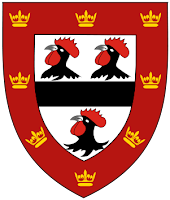This is all about a one day conference that was held here in Cambridge last Wednesday for a select group of people from sicence media, predominantly including journalists and film makers, all of whom have extensive and well developed online personas. Several of us from BlueSci where very honored to be asked to attend too, as the focus was squarely on the future. Where we at BlueSci, as aspiring science writers could take the field in the coming years.
The day was full of exciting and controversial bits of debate and we got to hear lots from many different view points about what science journalists should be doing and how we should be interacting with academics and the public. Here I have outlined the major topics discussed, more details are available elsewhere (see the end). Whilst I dod find some opinions difficult to agree with, it was interesting to hear what everyone had to say and I feel I have gained a lot from the experience.
Also I'll hopefully be posting again soon as following this conference I saw Simon Singh again, along with Ben Goldacre and Brian Cox on their Uncaged Monkeys tour here in Cambridge, so stay tuned for that.
 |
| The crest of Jesus College |
The day took the form of a series of open discussions with two leaders providing focus to the discussion. After a warm welcome by John Cornwell, John Naughton opened the first session by discussing the opportunities and challenges involved in adopting new media. He focused on how newspapers have become news organisations, with the paper being one of many media products. Science journalism was effectively compared to a developing ecology where a few large dinosaurs are being replaced by a myriad army of journalistic, blogging termites with a corresponding increase in productivity. The reduction is media size was also highlighted; people buy tracks not albums, read stories not papers and posts not blogs. He asked the questions: How do we add value to a story amidst such competition? And who pays for good journalism when so much of it is free online?